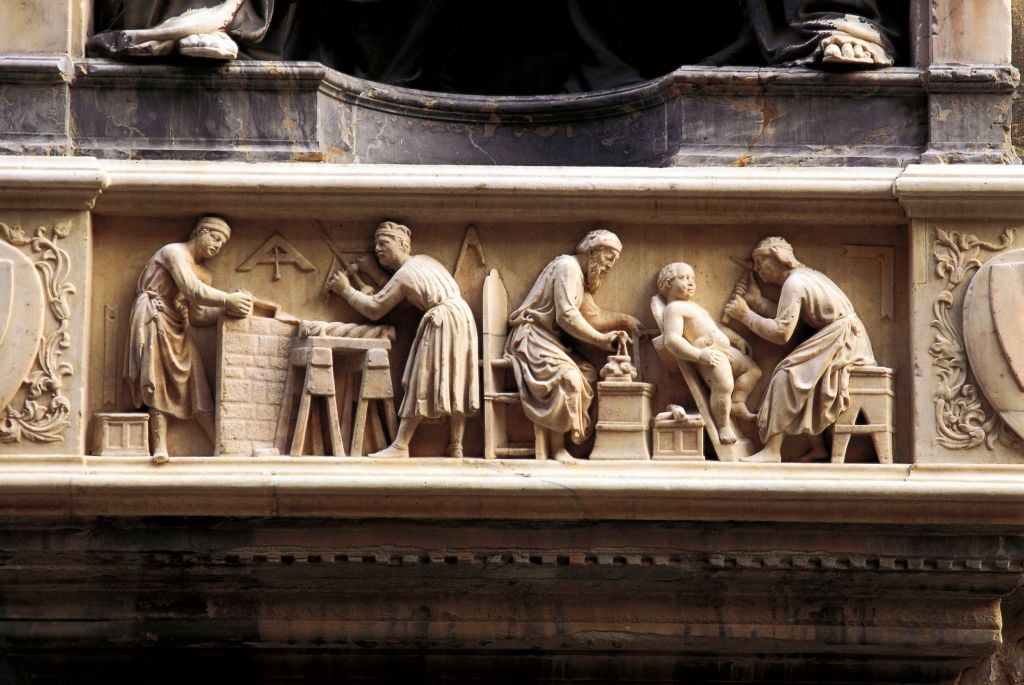Art World
Art Bites: The Hidden History Behind the Term ‘Masterpiece’
The term comes from the Middle Ages, when artists had to present a “master piece” to their craftsman’s guild.

What’s the deal with Leonardo’s harpsichord-viola? Why were Impressionists obsessed with the color purple? Art Bites brings you a surprising fact, lesser-known anecdote, or curious event from art history. These delightful nuggets shed light on the lives of famed artists and decode their practices, while adding new layers of intrigue to celebrated masterpieces.
The Oxford English Dictionary defines a “masterpiece” as a “work of outstanding artistry or skill,” especially “the greatest work of a particular artist.” The term is now more loosely applied to any excellent creation, but in Medieval times, craftsmen literally needed to create a master-piece in order to earn their title as “master.”
In the Middle Ages, young men (often around 12 years old) would be apprenticed to masters and would toil in their workshop to hone their craft. They may have lived in their master’s home, but would not have received payment. They could then advance to become a “journeyman,” a position between apprentice and master, where laborers could earn a wage.
Becoming a master following your apprenticeship meant that you could join a guild. Guilds offered members the chance to learn from one another, and once someone became a master within the guild they could open their own workshop (if they could afford it) and hire their own apprentices, and so the cycle would continue. Guilds controlled competition within creative fields: fellow guild members could not take business away from each other or undercut each other’s prices, and guilds were exempt from certain taxes. The name guild comes from the Saxon word “gilden,” meaning “to pay,” and members would contribute to the finances of the guild.
Crafts in which people could become masters ranged from gold-smithing to confectionary-making, carpentry to painting. Florence had 21 guilds in the mid-14th century, and its cloth-makers guild controlled around 30,000 workers in the Italian city.
In order to earn the promotion to master, a craftsman had to present a masterpiece to the guild in order to demonstrate mastery of the skills of the trade. Guidelines for the masterpiece were often provided, with most painters executing either a depiction of the Madonna and Child or Jesus’s crucifixion. Successful masterpieces would then be kept by the guild.
London’s Royal Academy still uses a similar system, requiring a “diploma work” from artists to be judged by the Academy’s panel.





